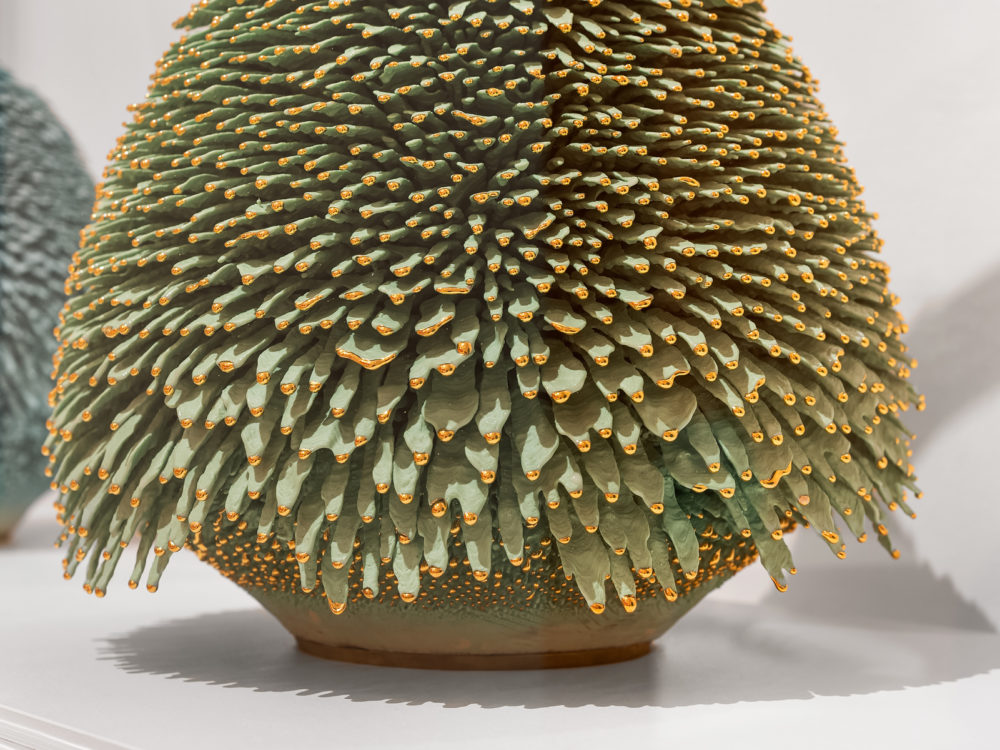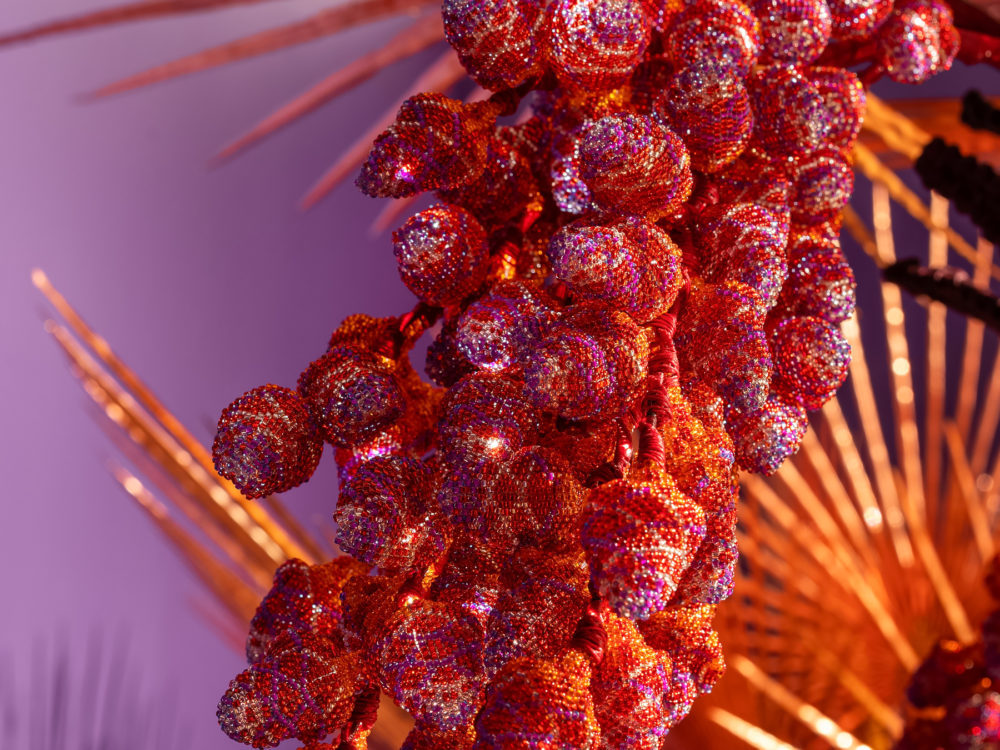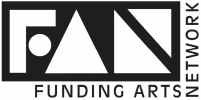THE HAAS BROTHERS
Ferngully
The Haas Brothers, twins Nikolai and Simon Haas, are artists/designers/creative producers based in Los Angeles. Their works of art and objects are situated between the contexts of art and design, frequently departing from the functional, and moving towards the exclusively sculptural. Playful and sometimes irreverent, they create furniture and sculptural objects in the form of anthropomorphic hairy chaises, fantastical beaded chairs and fungi, and hand-layered liquid clay accretion vases that explore themes of mathematics, science and nature, sexuality, nostalgia and social equity.
Their work is often born out of a collaborative process, working with craft guilds and other partners from around the world. They construct an imaginarium made up of monsters, beasts, flora and fauna, positing a link between the inherent functionality of nature through man-made forms. Their first solo museum exhibition, Ferngully, positions the viewer in an immersive environment that evokes cycles of renewal and rebirth found in nature.
The exhibition takes its title from the 1992 animated children’s film, “FernGully: The Last Rainforest.” [1] Set within a magical rainforest, the film traces the adventure of two unlikely comrades, a fairy named Crysta and a lumberjack named Zak, as they work to save her home from devastation. Through the film’s lens of childhood innocence, the exhibition evokes a sense of wonderment, nostalgia and fantasy staged in a forest-like environment. Referencing the fantastical spirit of the film, the works on view are deeply rooted in the awe-inspiring and sublime qualities of the natural environment, removed from overt notions of advocacy.
At the entrance of Ferngully, the viewer is simultaneously welcomed and confronted by a crowd of beasts – an emblematic series in the brothers’ eight-year practice. The beasts are exquisitely crafted in sumptuous materials, such as black, white and rusty brown Icelandic sheepskin, curly cow fur, chocolate goat fur, gray Gotland sheep fur, carved ebony and cast bronze. Forms adorned with horns, tongues, feet and genitalia are accompanied by stupendously creative names like Uma Worm-an (2018), Hair Witch Project (2015) and Wee Wee Top (2017). These creatures are endowed with diverse personalities, genders, sexualities, races, and human and animal characteristics. The inventive taxonomy, presented in a range of sizes (micro to mini to full-sized, and even functional), represents a complex ecosystem and multi-ethnic community, undercut by a witty and playful sense of humor.
The Haas Brothers unapologetically embrace craft, with a keen attention to materiality that is highly emphasized in the realm of design. The ceramic vases are exquisitely crafted through a process that mimics both natural accretion and 3D printing, by brushing slip over the form, layer by layer, until the vessel appears to grow clay tentacles.[2] John Palm Goutier (2018), Pope John Palm (2018), Palm Grier (2018) are new works of art produced especially for this exhibition. The fiber-optically lit palm tree lamps, complete with woven trunks, copper fronds, feature illuminated beadwork date pods that hang from the branches, created from a logic-based beading system that borrows from biological processes.
Collaboration is key in The Haas Brothers’ creative process, working with artisans, craft guilds and other creative partners to produce their works of art. For their series Afreaks in 2015, The Haas Brothers formed a partnership with The Haas Sisters, a community of bead-working artisans from South Africa. Together, the Brothers and Sisters made over 25 sculptures entirely beaded by hand. For Ferngully, The Haas Brothers partnered with the ladies of Lost Hills in California to create the palm trees’ intricately beaded date pods. The world of The Haas Brothers finds a recurring foundation in the communal act of craft making. As in “FernGully” the film, their practice utilizes an ever widening community and builds a sense of comradery among themselves and fellow artisans around the world.
Twins Nikolai and Simon Haas (b. 1984, United States), founded The Haas Brothers in Los Angeles in 2010. Early on, the brothers received accolades for their exceptional craftsmanship. The years since have seen them evolve from fabricators and collaborators to nimble cross-pollinators in creative disciplines including fashion, film, art and design. In their current works, The Haas Brothers explore aesthetic themes related to nature, science fiction, sexuality, and psychedelia. Their mastery and uniquely clever use of materials ranging from copper, porcelain and fur, to highly technical resins and polyurethane, sets them apart as both artists and designers. In 2015, The Haas Brothers embarked on an extraordinary collaboration with women artisans in Cape Town, South Africa. The resulting series of intricately beaded sculptural objects, Afreaks, was included in Beauty, at the Cooper Hewitt, Smithsonian Design Museum, NY and at the San Jose Museum of Art, CA. Their work is in the permanent collections of the RISD Museum in Providence, RI, the Cooper Hewitt, Smithsonian Design Museum in New York, NY, and the Metropolitan Museum of Art in New York, NY. The Haas Brothers currently live and work in Los Angeles, CA


























